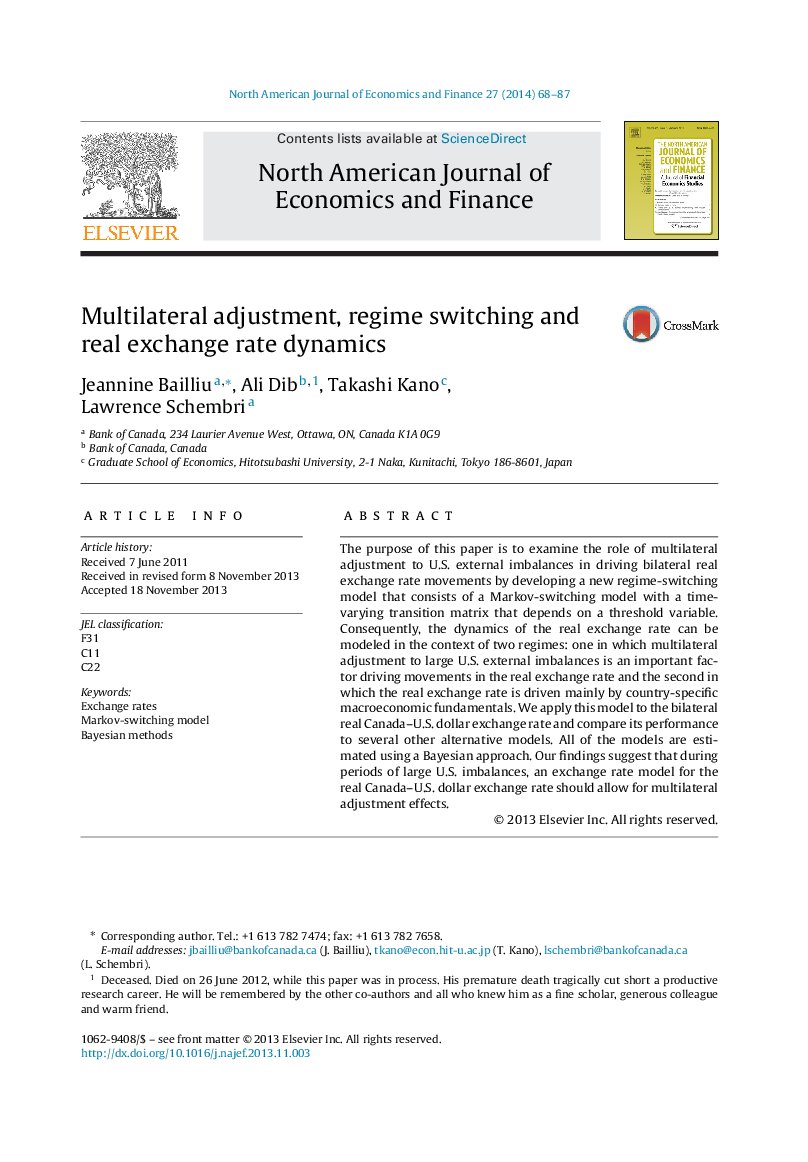| Article ID | Journal | Published Year | Pages | File Type |
|---|---|---|---|---|
| 7374005 | The North American Journal of Economics and Finance | 2014 | 20 Pages |
Abstract
The purpose of this paper is to examine the role of multilateral adjustment to U.S. external imbalances in driving bilateral real exchange rate movements by developing a new regime-switching model that consists of a Markov-switching model with a time-varying transition matrix that depends on a threshold variable. Consequently, the dynamics of the real exchange rate can be modeled in the context of two regimes: one in which multilateral adjustment to large U.S. external imbalances is an important factor driving movements in the real exchange rate and the second in which the real exchange rate is driven mainly by country-specific macroeconomic fundamentals. We apply this model to the bilateral real Canada-U.S. dollar exchange rate and compare its performance to several other alternative models. All of the models are estimated using a Bayesian approach. Our findings suggest that during periods of large U.S. imbalances, an exchange rate model for the real Canada-U.S. dollar exchange rate should allow for multilateral adjustment effects.
Related Topics
Social Sciences and Humanities
Economics, Econometrics and Finance
Economics and Econometrics
Authors
Jeannine Bailliu, Ali Dib, Takashi Kano, Lawrence Schembri,
